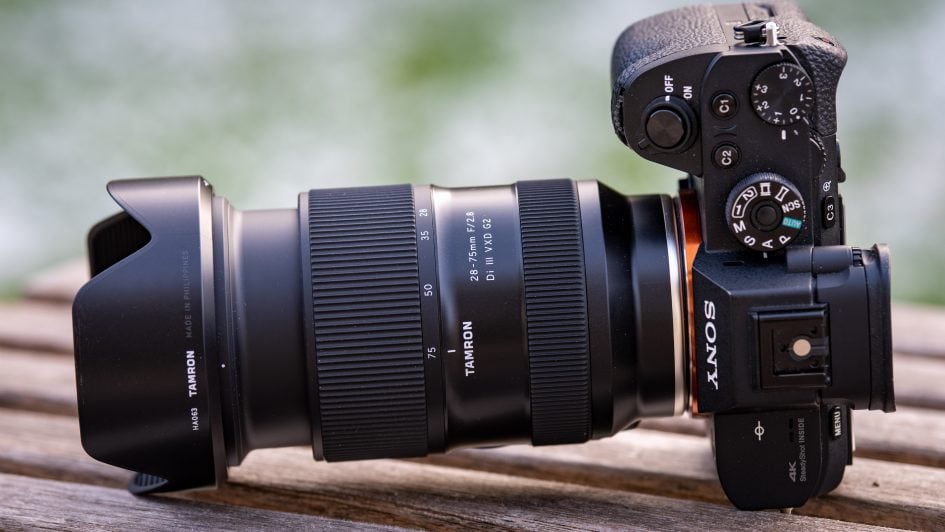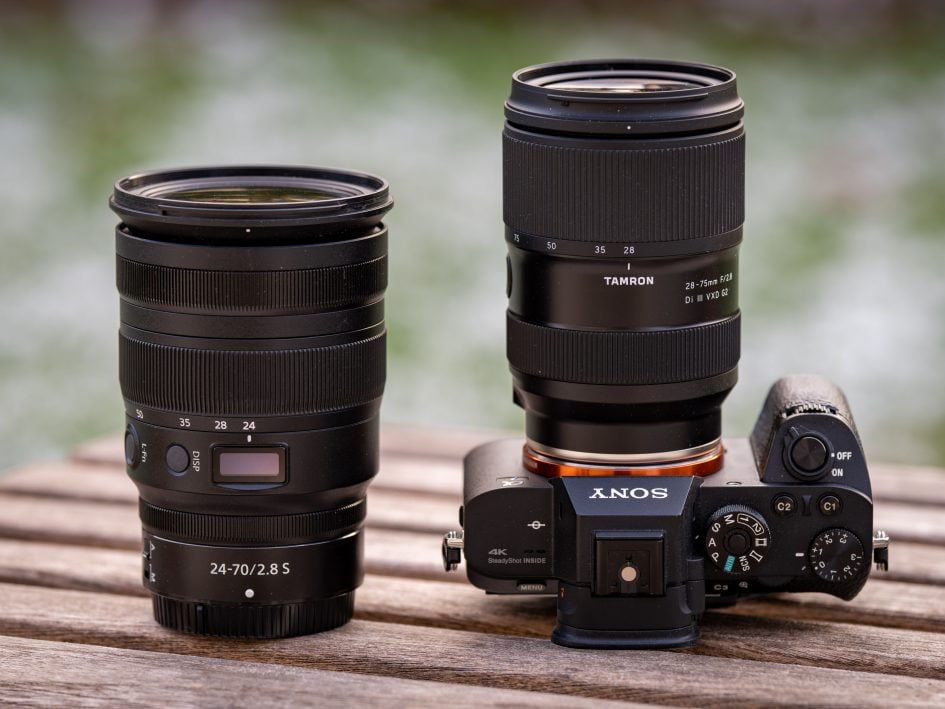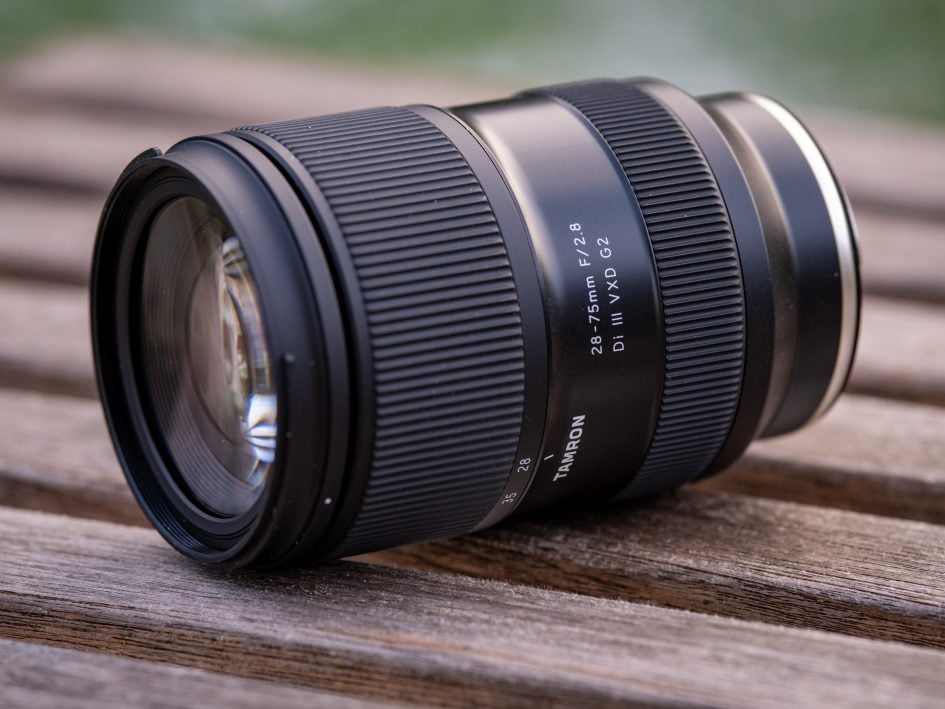Tamron 28-75mm f2.8 Di III G2 review
-
-
Written by Thomas
Intro
In 2018 the 28-75mm f2.8 Di III RXD (model A036) was Tamron’s first native lens designed specifically for Sony’s full-frame mirrorless E-mount bodies. Now Tamron updated the optical formula of the lens, changed the type of focus drive, and added a focus set button plus USB-C port to make the lens configurable via computer and Tamron’s new Lens Utility (“TLU”). Tamron also increased maximum magnification a bit over the 1st generation to 1:2.5 although this is only achieved at the wide end with a correspondingly short working distance. The new lens is designated 28-75mm f2.8 Di III VXD G2 (model A063) and its size, weight, and looks are almost identical to its predecessor – albeit with a slightly glossier and less finger-print susceptible surface. So far the lens is only available for Sony E-mount but Tamron has announced that they are working on Z- and RF-mount versions of their lenses. It is the slimmest and by far the lightest standard zoom lens with a constant f2.8 focal ratio available for full-frame mirrorless cameras.
At 949 EUR / 899 USD / 849 GBP the lens is only half as expensive as the Sony FE 24-70mm f2.8 GM and also 20% cheaper than the Sigma 24-70mm f2.8 DG DN Art. So if optical performance of Tamron’s new standard zoom lens does not disappoint it looks like a very attractive alternative to the competition. PS – if you’re interested in Tamron’s other full-frame zoom lenses for E-mount which complement the 28-75mm on the short and long end check out my in-depth reviews: Tamron 17-28mm f2.8 Di III RXD review / Tamron 70-180mm f2.8 Di III VXD.
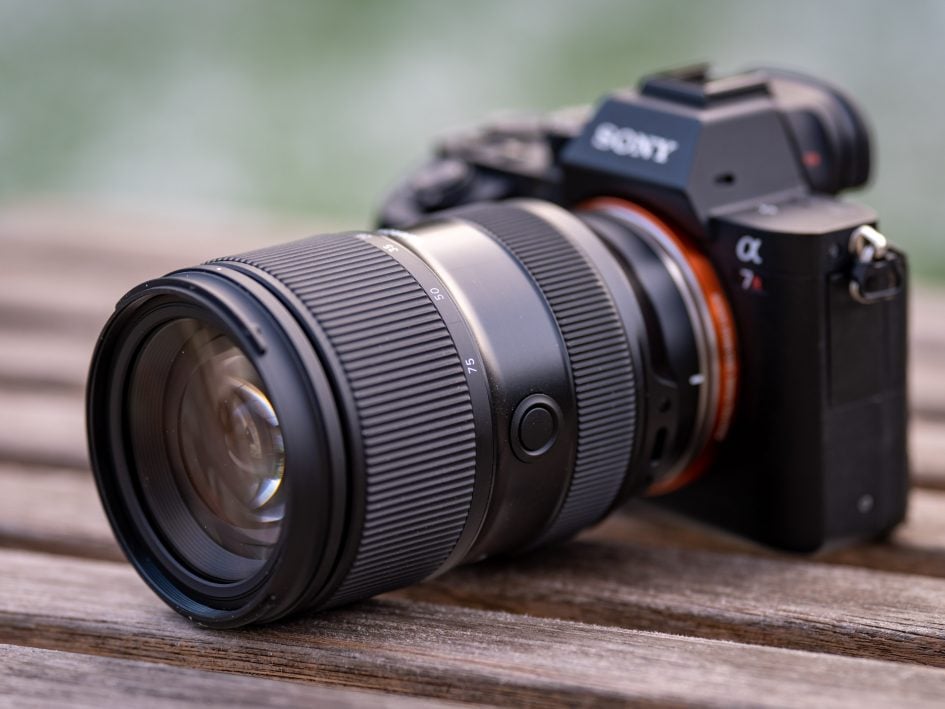
Facts and features
Let’s compare the new Tamron 28-75mm f2.8 Di III G2 (“Tamron 28-75” for short) to the Sigma 24-70mm f2.8 DG DN Art (“Sigma”) and Sony FE 24-70mm f2.8 GM (“Sony”). For good measure I’ve also added the Nikon Z 24-70mm f2.8 S (“Nikon”) and Canon RF 24-70mm f2.8 L IS USM (“Canon”) to the mix. Although Tamron does not (yet) offer their new lens in Z- or RF-mount I think it makes for an interesting comparison. As usual I’ve rated the features with a [+] (or [++]), when it’s better than average or even state of the art, a [0] if it’s standard or just average, and [-] if there’s a disadvantage.
Size (diameter x length): at 76 x 118mm (3.0 x 4.6in.) plus 28mm for the lens hood (87mm diameter) the Tamron is quite slim. The Sigma is 88 x 125mm, the Sony is 88 x 136mm, the Nikon and Canon are 89 x 126mm (all without lens hood). All lenses extend when zoomed to their longest focal length: The Tamron extends by 18mm, the Sigma 34mm, Sony 31mm, Nikon 30mm, Canon 23mm. [+]
Weight: 537g (1.2 lb.) plus 27g for the lens hood. The Sigma weighs 827g, the Sony 886g, Nikon 803g, Canon 900g (all without lens hood). So the new Tamron is the lightest of the bunch by at least 266g (0.6 oz.). [+]
Optics: The Tamron 28-75mm f2.8 Di III G2 has 17 elements in 15 groups including 2 special dispersion elements and 2 aspherical elements. The other lenses in this comparison are of a similarly complex construction. The Tamron has fluorine coating at the front lens to repel water, dust, and dirt and make cleaning easier. [+]
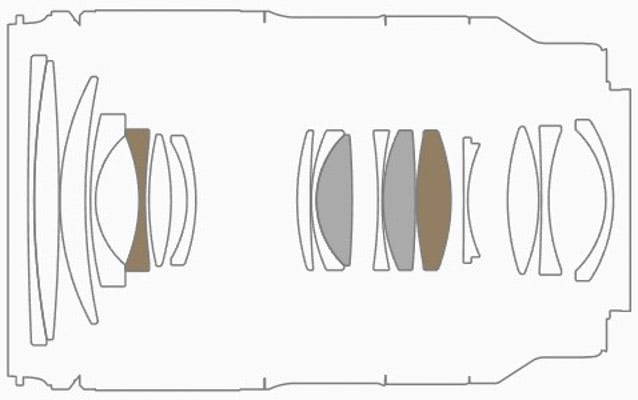
Closest focus distance with manual focus is 0.18m (7.1in.) with a magnification of 1:2.5 and an extremely short working distance of 4cm (1.6in.) at 28mm focal length. At 75mm focal length maximum magnification is 1:3.6 which is still quite good and results in a better working distance of around 21cm (0.7ft.). The Sigma achieves 1:2.6 at 24mm focal length and 1:3.8 at 70mm. Sony and Nikon achieve their maximum magnification of 1:4.0 resp. 1:4.2 at 70mm focal length. Canon reaches a maximum magnification of 1:3.3 at 32mm focal length. The Tamron 28-75 G2 achieves a magnification of 1:10 at its longest focal length at 0.85m (2.8ft.) distance. [+]
Filter-thread: 67mm. All the other lenses need bigger 82mm filters. 67mm filters also fit on Tamron’s 17-28mm f2.8 and 70-180mm f2.8 lenses. So you can get away with one moderately sized set of filters for Tamron’s trinity of f2.8 zooms. [+]
Image stabilization: All lenses in this comparison rely on the sensor-based image stabilization of the respective mirrorless cameras – except for the Canon which has optical image stabilization built in. [0]
Autofocus: All lenses in this comparison offer autofocus with built-in focus drive. Manual-focus override is by simply turning the dedicated focus ring. The action of the focus ring on the Tamron 28-75 G2 (and Tamron 35-150mm f2-2.8) can be switched via Tamron’s lens Utility (TLU) between the usual variable gearing or linear gearing and the direction of the ring can be reversed. This makes smooth focus pulling for videographers much easier. The Sony, Nikon and Canon sport the usual non-linear gearing of the focus ring while Sigma’s is almost linear. [+]
All lenses in this comparison cover full frame sensors or can equally be used on a cropped APS-C/DX camera body. [+]
Price: The Tamron 28-75 G2 comes at a recommended retail price of 949 EUR (incl. 19% VAT) / 899 USD / 849 GBP. The Sigma is 1140 EUR / 1070 USD / 1050 GBP, the Sony is 1800 EUR / 1800 USD / 1800 GBP, the Nikon is 2000 EUR / 2000 USD / 2000 GBP, the Canon currently sells for 2500 EUR / 2400 USD / 2390 GBP. By the way: the first generation Tamron 28-75mm f2.8 Di III RXD is discontinued but still available in shops at street prices of around 670 EUR / 630 GBP which is a very attractive price for a lens which earned a recommendation in 2018. [+]
The Tamron 28-75 comes without a pouch but the reversible lens hood is included. The other lenses come with a pouch and their lens hood has a lock to prevent it from accidentally falling off (not sure about the Canon). [0]
Aperture ring and other control elements: None of the lenses in this comparison has a dedicated aperture ring. But with Tamron’s Lens Utility (TLU) you can connect a computer to the lens and assign the focus set button on the Tamron 28-75 G2 to switch the focus ring to operate the aperture. For connecting computer and lens only a USB-C cable is required – no need to buy the TAP-in Console/USB docking station which older Tamron DSLR lenses needed. You can also assign other functions to the focus set button apart from the usual focus preset e. g. make the focus automatically shift between two focus positions A and B or assign a function from the camera body. The Sigma, Sony, and Nikon also have a function button witch normally operates as a focus lock button but can be assigned other functions from the camera. [+]
Sealing: All lenses in this comparison have a rubber grommet at the lens-mount plus further special weather-sealing throughout the construction. [+]
At a score of 0[-]/2[0]/10[+] the Tamron 28-75mm f2.8 Di III G2 is a well featured design with its major advantages being the smallest, lightest, and cheapest of the lenses in this comparison. And Tamron did not skimp on features like thoroughly weather sealing, focus set button, and customization via USB port. Plus it can reach magnifications of 1:2.5 – albeit at a very short working distance. The only feature that is missing is optical image stabilization – which only the Canon offers.
Two standard zoom lenses
Above: Nikon Z 24-70mm f2.8 S (left), Tamron 28-75mm f2.8 Di III G2 (right)
Coverage
With its 2.7x zoom-range the Tamron 28-75 starts at the short end with an angle of view of 75 degrees, compared to the 84 degrees of zooms starting at 24mm. At the long end the Tamron 28-75 offers 7% more reach/magnification than the other standard zoom lenses.
Here is the angle of view that the Tamron 28-75mm f2.8 Di III G2 covers compared to the angle of view at 24mm or 70mm:
Above: Tamron 28-75mm f2.8 Di III G2 coverage on a full-frame camera at 28mm (left) and 75mm (right), Distortion Compensation AUTO
Above: Angle of view of 24mm (left) and 70mm (right) on a full-frame camera
The difference between the Tamron 28-75mm f2.8 Di III G2 starting at 28mm versus a lens starting at 24mm is visible but doesn’t look like much. I wouldn’t underestimate the difference at the short end though: Not always can you step back enough to get the almost 10 degrees wider view of 24mm focal length. The other thing of note: The benefit of reaching 75mm with the Tamron is certainly not a decisive factor. If the image at 70mm is sharp enough, cropping a 42MP shot at 70mm to match the angle-of-view of 75mm still nets you around 37MP.
Focus and zoom
Focus accuracy and repeatability is critical to consistently produce sharp shots. Repeatability (the accuracy of focus on the same subject after repeated focus-acquisition) of the Tamron 28-75mm f2.8 Di III G2 is very good (measured 99.1% in Reikan FoCal) with no outliers over a series of 40 shots on the well lit and contrasty focus test target. And there is almost no focus variation whether the lens focuses from a closer distance or from infinity. In practice my experience with focusing on my copy of the lens was a bit less satisfactory: More often than I liked focus was just lightly off. So I started checking almost every shot for correct focus – a precaution which I wouldn’t want to adopt under normal circumstances. But then again: this might be an individual glitch on my specific copy of the lens. At 70mm focal length the lens focuses in around 0.6 sec from infinity to 0.85m (1:10 magnification).
The zoom ring has a pretty short throw of about 60 degrees and turns the way Sony (and Nikon) users are used to. It has a 28mm wide rubber surface with a good grip and turns with quite some resistance. It can hardly be operated with one finger but the lens still shows a bit of zoom creep. The focus ring is 16mm wide and is located closer to the camera. It also has a rubberized surface, moves smoothly, and can easily be operated even with your pinky.
AF-operation of the Tamron 28-75 G2 is inaudible if you record video with the built-in microphone. In photo mode you can hear a slight noise from the outside.
As you pull focus, you’ll notice very little focus breathing: When I adjusted the focus from infinity to 0.85m at 75mm focal length, I measured a 2% increase in magnification. This is hardly noticeable. Same at 28mm focal length.
I also tested whether Tamron’s zoom lens allows you to change the focal length without altering its focus. This characteristic is called parfocal. I focused the lens at 75mm and then slowly zoomed back checking focus on the way. The 28-75mm f2.8 Di III G2 did not keep its focus perfectly towards the short end. It’s not a huge deviation but enough to be seen even at only 50% magnification or a 4k image/video recording.
Next check out my quality results!
Check prices on the Tamron 28-75mm f2.8 Di III G2 at B&H, Adorama, WEX UK or Calumet.de. Alternatively get yourself a copy of my In Camera book or treat me to a coffee! Thanks!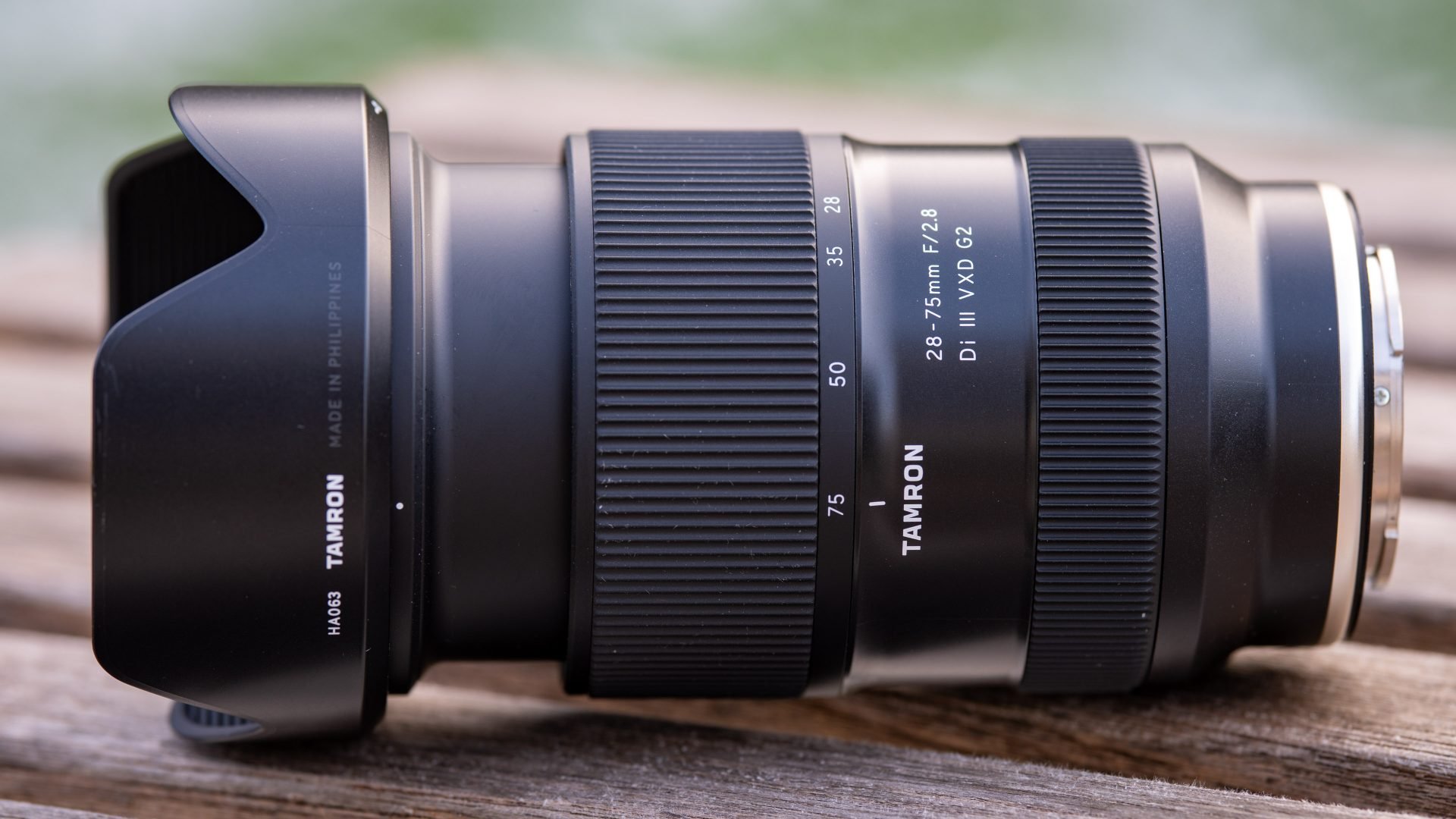
 Tamron has considerably improved upon their 1st generation standard zoom for mirrorless cameras: Their new 28-75mm f2.8 Di III G2 is optically right up there with the best from other manufacturers even surpassing them at the short end. Plus, it is the smallest and by far lightest and cheapest of the bunch. And Tamron didn't skimp on features: The lens is fully weather sealed, and Tamron added a focus set button plus USB-C port to make the lens highly configurable via computer and their new Lens Utility (“TLU”). Only its close-up performance is disappointing. But other than that Tamron has designed a compelling standard zoom which clearly earns a Highly Recommended!
Tamron has considerably improved upon their 1st generation standard zoom for mirrorless cameras: Their new 28-75mm f2.8 Di III G2 is optically right up there with the best from other manufacturers even surpassing them at the short end. Plus, it is the smallest and by far lightest and cheapest of the bunch. And Tamron didn't skimp on features: The lens is fully weather sealed, and Tamron added a focus set button plus USB-C port to make the lens highly configurable via computer and their new Lens Utility (“TLU”). Only its close-up performance is disappointing. But other than that Tamron has designed a compelling standard zoom which clearly earns a Highly Recommended!